Ecosystems: An NGSS-Aligned Unit Transcript
Speaker 1: These activities are part of an NGSS designed curriculum developed by [inaudible 00:00:15] Science in collaboration with the American Museum of Natural History.
The unit is about disruptions in ecosystems. The first chapter addresses wolves in Yellowstone as the phenomena reintroducing a predator into an ecosystem. Students learn about this through a series of six activities, and we use the [inaudible 00:00:37] by the instructional model. It's not the only instructional model that you can use, but it's one that really lends itself to using the science and engineering practices and have the kids figuring out science concepts and science understanding and explaining real world phenomenon.
Speaker 2: Our chapter one overview question is what happens when a predator comes back to an environment?
Speaker 3: So this is my first time teaching this unit. I just learned it over the summer, so I was very nervous about it, but I've very thankful to be a part of this process because without having this curriculum, I wouldn't know where to start making my units align to NGSS.
Speaker 2: We are going to start off with making a poster to answer all these questions as a team.
Speaker 3: Activity 1.1 we begin with students thinking about their local ecosystems, being introduced to this situation in Yellowstone where people had killed the wolves and then reintroduced them.
Speaker 4: These nonliving things interact with the living things by ...
Speaker 3: Students begin by thinking about their opinions about whether or not wolves should be reintroduced into an ecosystem which will tie in to the evaluate activity at the end.
Speaker 5: I think that beavers would eat all three of these because maybe like ...
Speaker 3: In the second activity, students have a chance to explore the food web of Yellowstone and learn about the different relationships between organisms in the food web.
Speaker 6: What's the meaning of competition?
Speaker 3: In the third activity, students learn the official scientific terms for those relationships that they were exploring in the second activity.
Speaker 7: I think it's probably like global warming or climate change that's probably affecting how ...
Speaker 3: In the fourth activity, students have a chance to look at actual data about those relationships, and that's where we introduce the idea that it's not just living things, but also nonliving things that can affect populations.
Speaker 6: Sketch out the possible graph on the axis I provided for you. Just a general pattern for wolves and elk.
Speaker 3: In the fifth activity, students have a chance to apply what they've been learning and match different scenarios to trends and patterns in graphs. Really the cross cutting concept of the chapter becomes really useful for them.
Speaker 6: Who would like to share out first their evidence of why they chose their side?
Speaker 3: Finally in the evaluate activity, they revisit this question about reintroducing a predator into an ecosystem.
Speaker 8: Deer have cost $250 million by destroying the environment so they need to be controlled by adding wolves.
Speaker 3: Instead of basing it on opinion, students really have a chance to base it on what they've been learning and the evidence they've been gathering throughout the chapter.
Speaker 9: Oh, that's good. This is good. This is good.
Speaker 2: I feel like the kids are really passionate about what we were learning because it applied to real life for them, and it was amazing to see if come full circle where the students had to determine whether they should reintroduce wolves to a new ecosystem.
Speaker 3: I think traditionally teachers will front load a lot of the content and then do an experiment or an investigation after students have been presented with a lot of material. In learning in this way, the students are looking at a real world situation and because students are actually using science and engineering practices to figure things out, they're actually doing real science in the classroom.
Speaker 2: Reintroducing them would be what pattern of interaction?
Speaker 10: My job as a science teacher to really help them discover how the real world works. Every day is a new discovery for me, and I'm helping them discover it themselves.


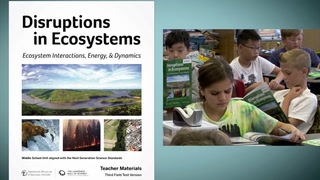
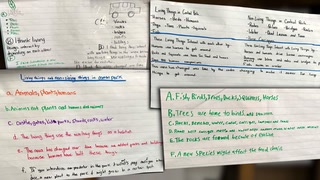
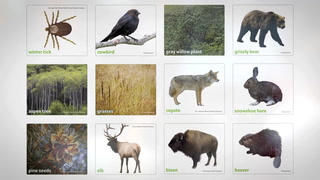

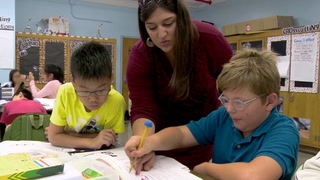
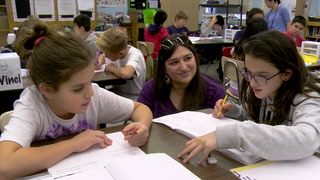
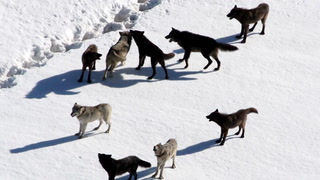
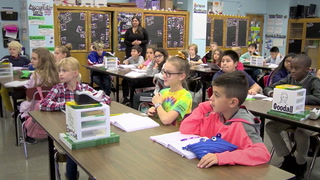









2 Comments
Barbara Cadient... Apr 8, 2019 8:31pm
My name is Barbara Cadiente-Nelson. I am certified as a Secondary Language Arts teacher. I taught at JDHS and later became the Education Department Director for Sealaska Heritage Institute. I am currently the Juneau Indian Studies Project Director / Native Community Liaison / Native Student Success Coordinator for the Juneau School District. In this capacity, I brought Native community partners, Elders, and Knowledge Bearers to the table to work with District teachers and administrators to refresh the JSD K-12 Science Curriculum. This collaborative work culminated in culturally relevant, place/science based K-12 Science Curriculum Framework which was formally adopted by the Juneau School Board in 2017. This work was built upon the NGS model.
I picked this video because of the ongoing need to deepen the implementation of this sciene framework to meet and succeed its cultural and place-based initiatives to impact a community starting in the classroom. This particular video gave a 30,000 foot overview of the unit: Disruption in Eco System - killing of wolves and then re-introducing wolves back into the area.
What is intriguing is how place-based initiatives, if held to the integrity of this model, will bring about change in the mind, spirit and language of a student which ultimately and positively impacts the land and all its creatures. Not only people are affected by the collision of cultures, but all inhabitants of the land.
(I will submit this and return to finish....)
Zoe Tassava Apr 3, 2023 11:03pm
Hi, Mrs. Cadiente-Nelson,
I wish you had come back to finish your comment. I am currently doing research into the incorporation of indigenous knowledge into school curriculums and I would love to pick your brain about the process your school went through and what your results have been with the curriculum since fully incorporating it in 2017. What have been the pros and cons? What insights and warnings do you have for other schools? What would you have changed about the process of adapting indigenous knowledge into your school's curriculum? I want to know what your recommendations are for other teachers looking into this same process.
I would love to know more. This is a topic I have begun to find a lot of passion for, but I'm only in the very beginning of the topic. There's a lot about a lot I don't know that I don't know.